Abstract
Two thiosulfate-oxidizing marine heterotrophs, strains 12W and 16B, were tested for utilization of [14C]glucose and [14C]acetate, respectively, in the presence or absence of thiosulfate. Thiosulfate oxidation caused an increase in organic carbon incorporation and a corresponding decrease in respiration at pH 6.5, near the optimum pH for thiosulfate oxidation and thiosulfate-stimulated growth in these bacteria. The amount of glucose or acetate metabolized remained virtually unaffected by thiosulfate oxidation. The metabolic shift in carbon utilization was diminished by increasing the initial pH to 8.0. The results indicate that marine heterotrophs 12W and 16B exhibit a type of mixotrophic metabolism which differs from that observed in the thiobacilli.
Full text
PDF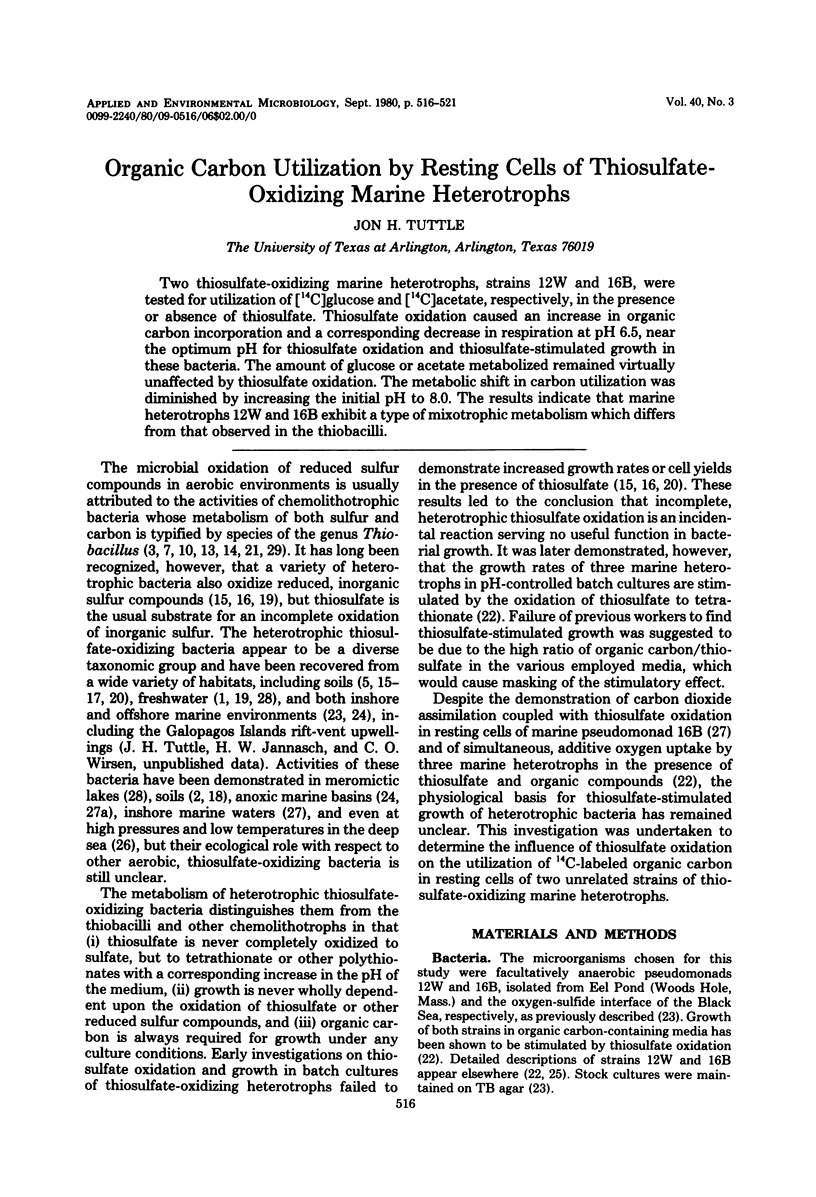
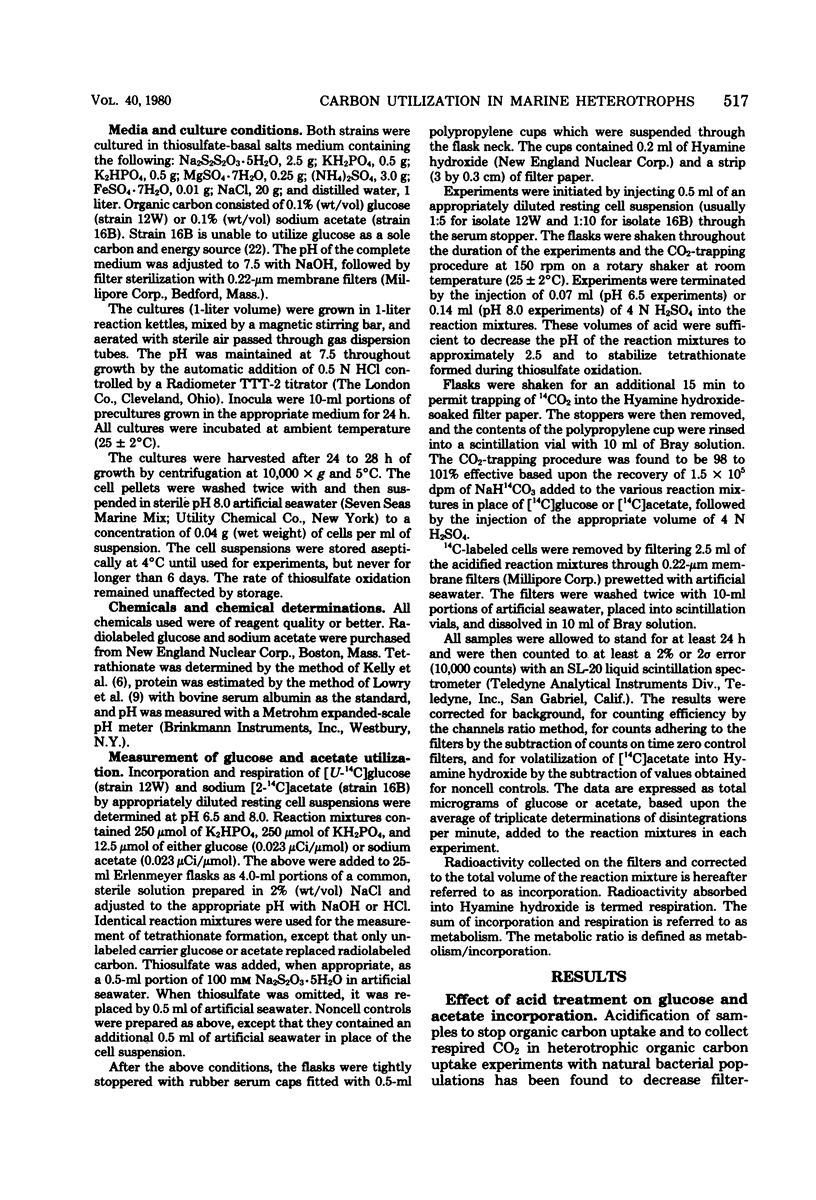
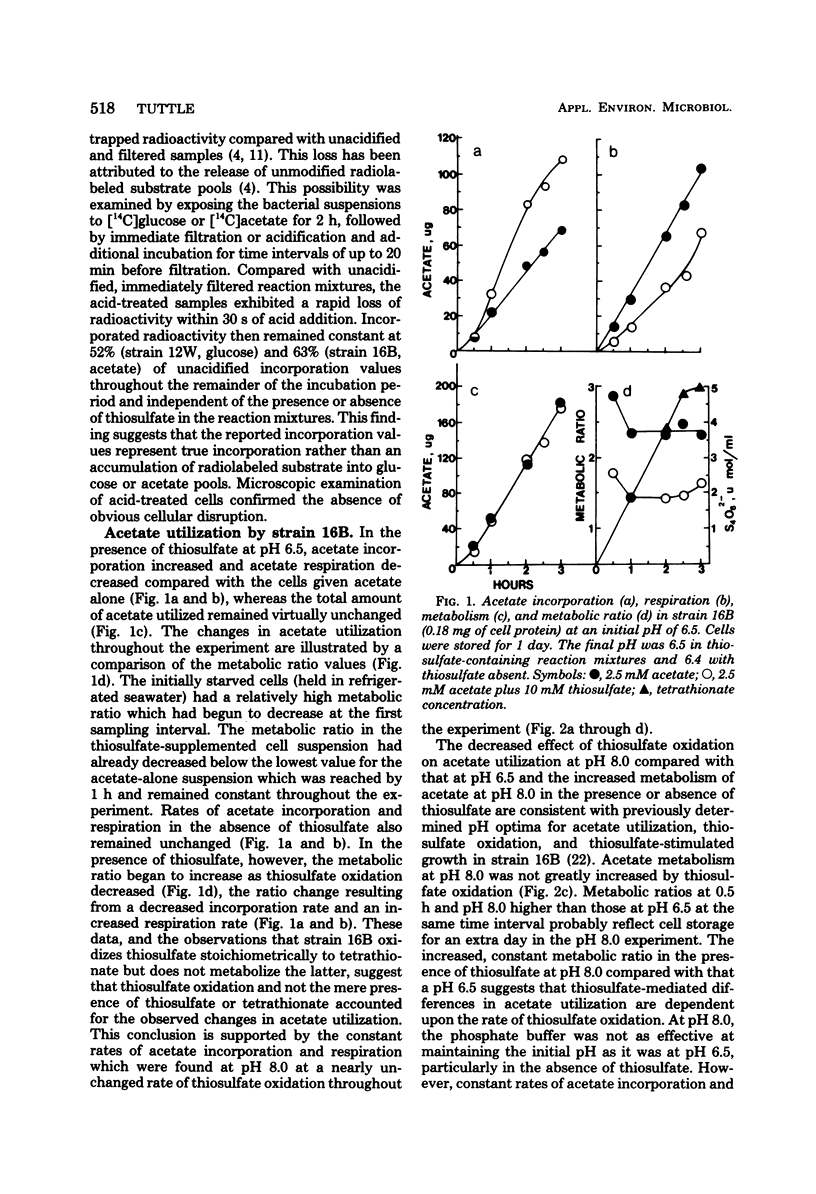
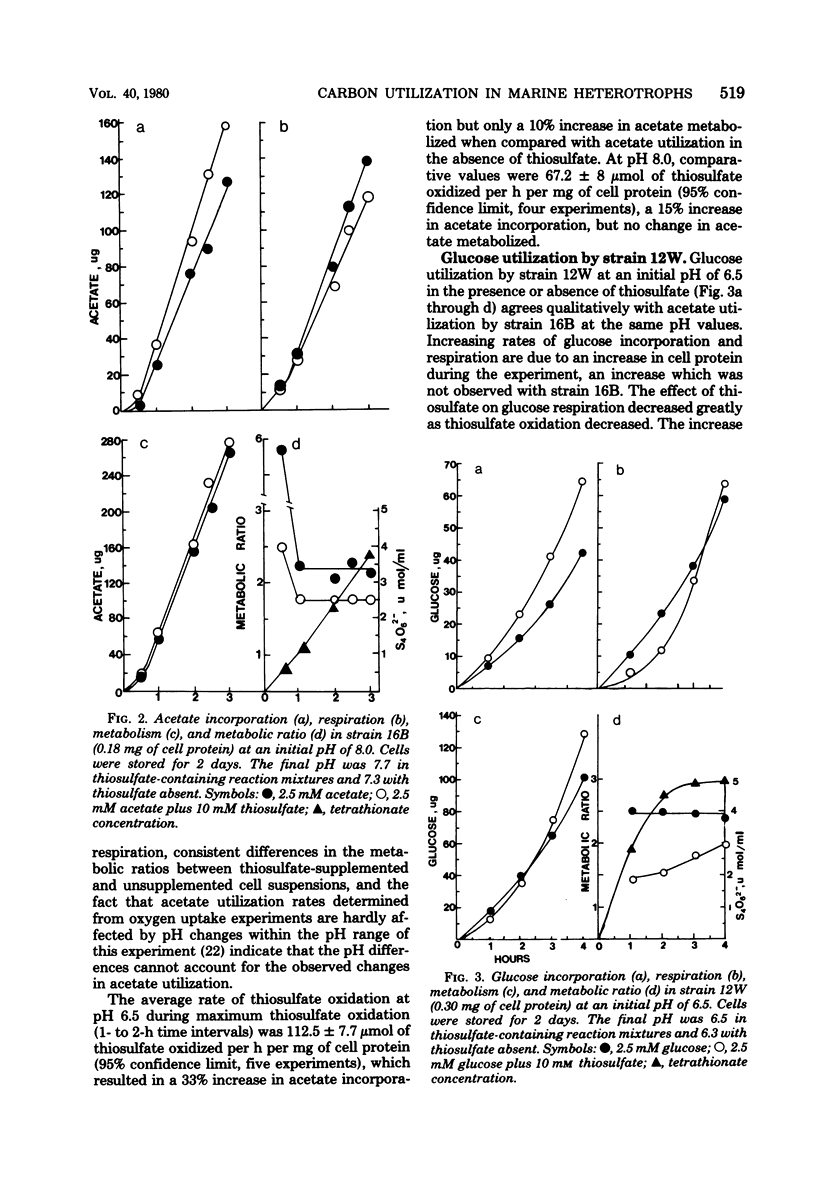
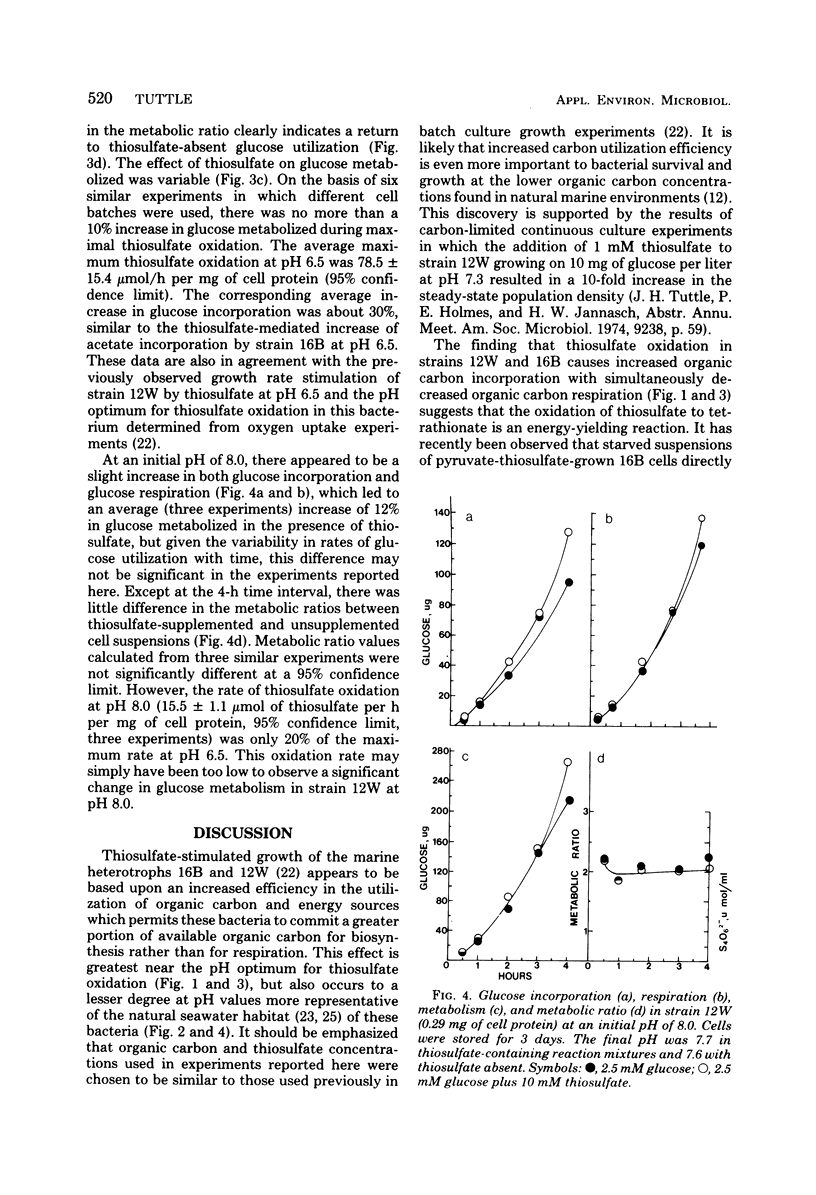
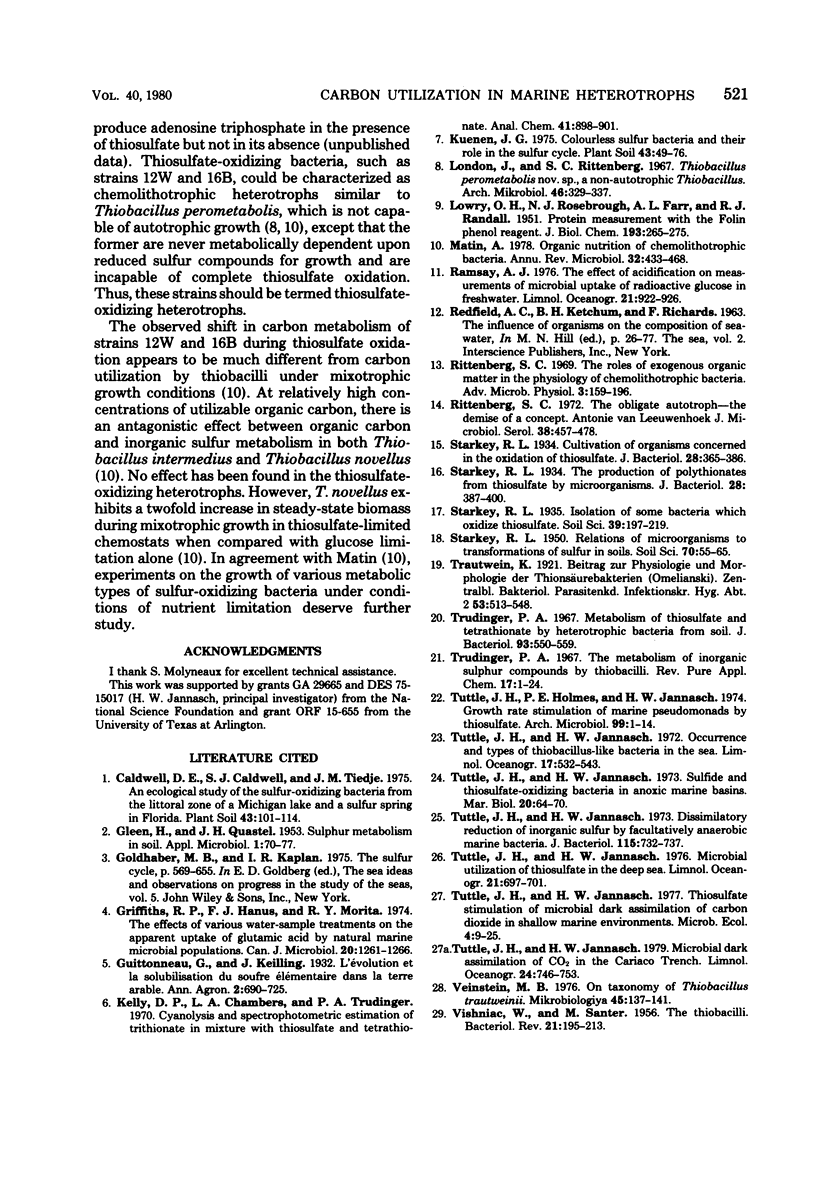
Selected References
These references are in PubMed. This may not be the complete list of references from this article.
- GLEEN H., QUASTEL J. H. Sulphur metabolism in soil. Appl Microbiol. 1953 Mar;1(2):70–77. doi: 10.1128/am.1.2.70-77.1953. [DOI] [PMC free article] [PubMed] [Google Scholar]
- Griffiths R. P., Hanus F. J., Morita R. Y. The effects of various water-sample treatments on the apparent uptake of glutamic acid by natural marine microbial populations. Can J Microbiol. 1974 Sep;20(9):1261–1266. doi: 10.1139/m74-194. [DOI] [PubMed] [Google Scholar]
- LOWRY O. H., ROSEBROUGH N. J., FARR A. L., RANDALL R. J. Protein measurement with the Folin phenol reagent. J Biol Chem. 1951 Nov;193(1):265–275. [PubMed] [Google Scholar]
- Matin A. Organic nutrition of chemolithotrophic bacteria. Annu Rev Microbiol. 1978;32:433–468. doi: 10.1146/annurev.mi.32.100178.002245. [DOI] [PubMed] [Google Scholar]
- Starkey R. L. Cultivation of Organisms Concerned in the Oxidation of Thiosulfate. J Bacteriol. 1934 Oct;28(4):365–386. doi: 10.1128/jb.28.4.365-386.1934. [DOI] [PMC free article] [PubMed] [Google Scholar]
- Starkey R. L. The Production of Polythionates from Thiosulfate by Microörganisms. J Bacteriol. 1934 Oct;28(4):387–400. doi: 10.1128/jb.28.4.387-400.1934. [DOI] [PMC free article] [PubMed] [Google Scholar]
- Trudinger P. A. Metabolism of thiosulfate and tetrathionate by heterotrophic bacteria from soil. J Bacteriol. 1967 Feb;93(2):550–559. doi: 10.1128/jb.93.2.550-559.1967. [DOI] [PMC free article] [PubMed] [Google Scholar]
- Tuttle J. H., Holmes P. E., Jannasch H. W. Growth rate stimulation of marine pseudomonads by thiosulfate. Arch Microbiol. 1974;99(1):1–14. doi: 10.1007/BF00696218. [DOI] [PubMed] [Google Scholar]
- Tuttle J. H., Jannasch H. W. Dissimilatory reduction of inorganic sulfur by facultatively anaerobic marine bacteria. J Bacteriol. 1973 Sep;115(3):732–737. doi: 10.1128/jb.115.3.732-737.1973. [DOI] [PMC free article] [PubMed] [Google Scholar]
- VISHNIAC W., SANTER M. The thiobacilli. Bacteriol Rev. 1957 Sep;21(3):195–213. doi: 10.1128/br.21.3.195-213.1957. [DOI] [PMC free article] [PubMed] [Google Scholar]
- Vainshtein M. B. O sistematicheskom polozhenii Thiobacillus trautweinii. Mikrobiologiia. 1976 Jan-Feb;45(1):137–141. [PubMed] [Google Scholar]


